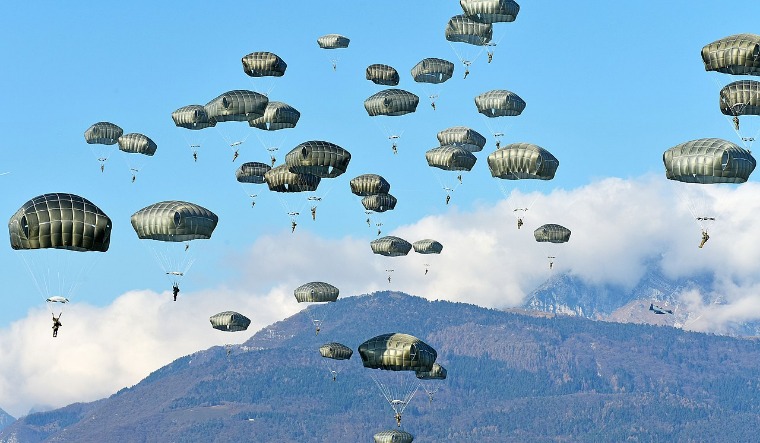While progress in multiple realms of warfare continues, the humble soldier still remains a key, if not decisive, part of every nation's army. And airborne soldiers are often the first to deploy to conflict zones.
Since the Second World War, parachute regiments have played a key role in most major conflicts. Countries have worked to develop parachutes that can be used at altitudes of several kilometres and with high glide ranges, to allow transport aircraft to stay clear of enemy fire.
Now, a Russian company has claimed it is working to develop "stealth" parachutes that cannot be detected by night vision devices.
Igor Nasenkov, the CEO of Technodinamika Group (a subsidiary of Russian arms conglomerate Rostec), gave details of the project to Russia's TASS news agency on Wednesday.
“The effect of chemical spraying—for making the parachute invisible for night vision devices—on the physical properties of basic fabrics used in the manufacture of parachute systems’ canopies and cords and, correspondingly, the possibility of their use in producing materials for the canopies of parachute systems, are now being studied," Nasenkov told TASS.
"The stealth effect is achieved by applying special saturating techniques at the stage of producing polyamide threads and fabrics. Already today, there are samples of materials for the manufacture of parachute backpacks that will be invisible for night vision devices," Nasenkov added.
In January this year, the US Army's Airborne and Special Operations divisions expressed interest in improving their parachute systems to allow paratroopers to be launched at altitudes of over 7.5km.
The improved height would allow the parachute to have significantly more glide range, enabling the launch aircraft to stay away from enemy defences. It would also give a greater selection of potential landing zones to keep enemy forces guessing.


